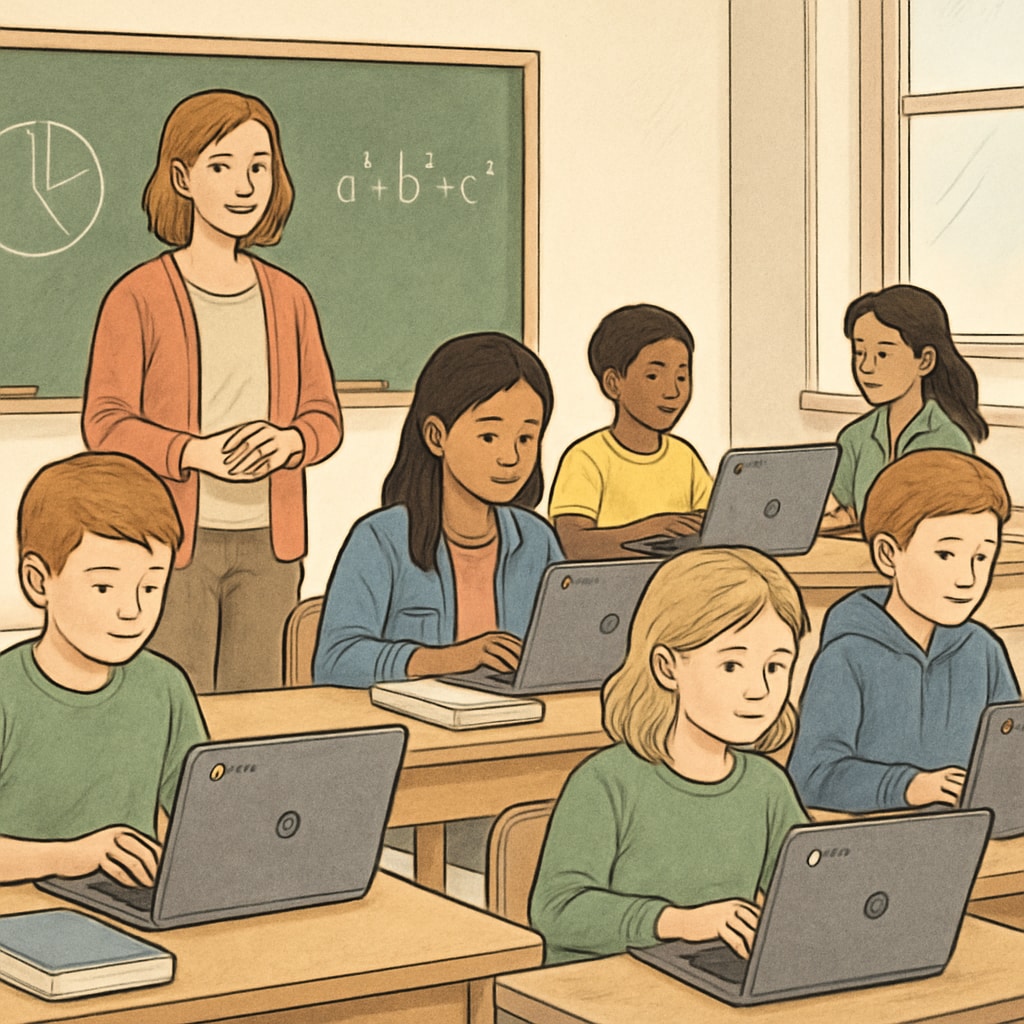As Chromebooks and other digital tools become staples in K12 classrooms, educators face an important dilemma: Is the drive for educational technology (EdTech) efficiency inadvertently compromising the development of students’ critical thinking? EdTech tools undoubtedly streamline learning processes, offering quick access to information and automating many tasks. However, the reliance on these technologies raises questions about their long-term impact on cognitive skills like analysis, reasoning, and problem-solving.

EdTech Efficiency: A Boon or a Barrier?
Digital tools like Chromebooks have transformed traditional classrooms into tech-driven environments. They simplify administrative tasks like grading, facilitate instant feedback, and offer interactive learning experiences through educational apps. For example, platforms like Google Classroom make collaboration seamless, while adaptive learning software tailors content to students’ individual needs.
However, this convenience comes with potential drawbacks. By automating processes and providing pre-packaged solutions, EdTech can inadvertently suppress opportunities for students to engage in deeper, critical thinking. When answers are just a click away, the incentive to question, analyze, or explore complex ideas diminishes.
- Students may become overly reliant on digital tools for problem-solving.
- Reduced emphasis on face-to-face discussions can weaken interpersonal communication skills.
- Overuse of pre-designed templates limits creativity and independent thought.
While the efficiency of EdTech is undeniable, educators must strike a balance to ensure students develop robust cognitive skills alongside technical proficiency.
Chromebooks in the Classroom: A Case Study
Chromebooks have been widely adopted in schools due to their affordability, user-friendly design, and compatibility with cloud-based learning platforms. These devices enable students to access vast amounts of information, complete assignments, and collaborate with peers—all in real-time.
However, studies suggest that excessive screen time and reliance on digital tools can impact critical thinking. For example, a study published by Britannica highlights how traditional methods like reading printed materials often lead to better comprehension and critical analysis compared to reading on screens. Similarly, face-to-face debates or group discussions often foster deeper engagement than online forums.

Strategies to Balance EdTech and Cognitive Growth
To address the potential downsides of EdTech, educators can implement strategies that promote critical thinking alongside technological use:
- Encourage Socratic questioning: Use digital platforms to facilitate discussions that challenge students to think critically.
- Integrate offline activities: Balance screen-based lessons with traditional methods like debates, written essays, and collaborative projects.
- Focus on problem-solving: Design tasks that require students to analyze and synthesize information rather than simply retrieve it.
- Limit screen time: Set boundaries to ensure students engage in diverse learning activities, both online and offline.
By combining EdTech with methods that nurture critical thinking, educators can create a more holistic learning environment.
The Way Forward
While Chromebooks and other EdTech tools offer undeniable benefits, their role in education should be carefully evaluated to ensure they support—not hinder—students’ cognitive development. Educators must continuously adapt their methods to foster critical thinking, creativity, and problem-solving skills alongside digital proficiency.
Ultimately, technology should serve as a tool to enhance learning, not replace the human elements that make education truly transformative. Striking the right balance between EdTech efficiency and cognitive growth is essential for preparing students to thrive in a complex, technology-driven world.
Final Thoughts: The integration of EdTech in classrooms is a double-edged sword. With thoughtful implementation, it can enhance learning while preserving the critical thinking skills that are vital for lifelong success.


